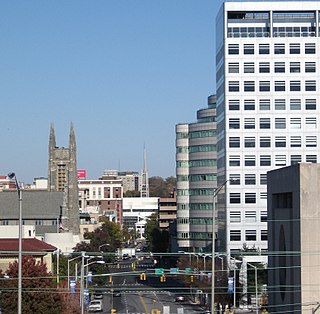
Fairfield County is a county in the southwestern corner of the U.S. state of Connecticut. It is the most populous county in the state and was also its fastest-growing from 2010 to 2020. As of the 2020 census, the county's population was 957,419, representing 26.6% of Connecticut's overall population. The closest to the center of the New York metropolitan area, the county contains four of the state's top 7 largest cities—Bridgeport (1st), Stamford (2nd), Norwalk (6th), and Danbury (7th)—whose combined population of 433,368 is nearly half the county's total population.

Greenwich is a town in southwestern Fairfield County, Connecticut, United States. At the 2020 census, it had a population of 63,518. Greenwich is a principal community of the Bridgeport–Stamford–Norwalk–Danbury metropolitan statistical area, which comprises all of Fairfield County, and is part of the Western Connecticut Planning Region. The town is the southwesternmost municipality in both the State of Connecticut and the six-state region of New England. The town is named after Greenwich, a royal borough of London in the United Kingdom.
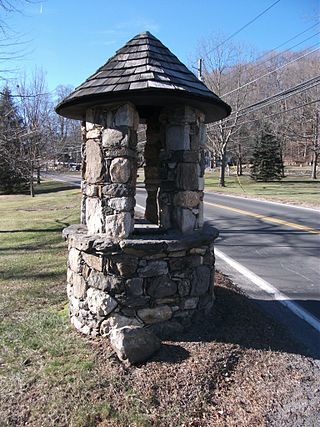
Bedford is an incorporated town in Westchester County, New York. The population was 17,309 at the 2020 census.

Lieutenant-General William Tryon was a British Army officer and colonial administrator who served as governor of North Carolina from 1764 to 1771 and the governor of New York from 1771 to 1777. He also served during the Seven Years' War, the Regulator Movement, and the American War of Independence.

Cos Cob is a neighborhood and census-designated place in the town of Greenwich, Connecticut, United States. It is located on the Connecticut shoreline in southern Fairfield County. It had a population of 6,873 at the 2020 census.

The history of Norwalk, Connecticut ranges from pre-contact cultures and Native Americans to the 21st century.

The history of Greenwich, Connecticut, United States.

Putnam Cottage was also known as Knapp Tavern during the American Revolution. It is located at 243 East Putnam Avenue, on the former route of the Boston Post Road, in Greenwich, Connecticut.

Riverside is a neighborhood/section in the town of Greenwich in Fairfield County, Connecticut, United States. As of the 2020 census, it had a population of 8,843.
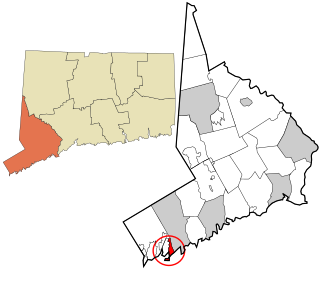
Old Greenwich is an affluent coastal village in Fairfield County, Connecticut, United States. As of the 2010 census it had a population of 6,611.
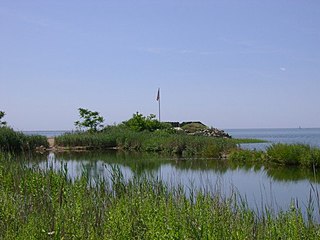
Fort Nathan Hale, also known as Fort Hale Park, Black Rock, is a 20-acre (8.1 ha) city park located on the east shore of New Haven Harbor in New Haven, Connecticut. It includes the site of a 1659 fort, a Revolutionary War-era fort, and a Civil War-era fort. The fort was named after Nathan Hale, Connecticut's official hero. Since 1921, the site has been owned by the state of Connecticut. It has been used as a park and maintained as a historical site by the City of New Haven. Educational programs are given throughout the year to students attending local schools.
The Battle of Ridgefield was a series of American Revolutionary War skirmishes in Danbury, Connecticut and Ridgefield, Connecticut.

Cos Cob Power Station was a historic power station near the Metro-North Railroad tracks, the Mianus River and Sound Shore Drive in the Cos Cob area of Greenwich, Connecticut.
Tryon's Raid occurred in July 1779, during the American Revolutionary War, in which 2700 men, led by British Major General William Tryon, raided the Connecticut ports of New Haven, Fairfield, and Norwalk. They destroyed military and public stores, supply houses, and ships as well as private homes, churches, and other public buildings. The raids were ineffectually resisted by militia forces.
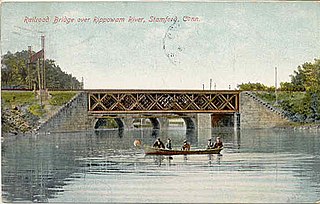
The Rippowam River is a river in Fairfield County, Connecticut and Westchester County, New York. It drains a catchment area of 37.5 square miles (97 km2) and flows for 17 miles (27 km) from Ridgefield to Long Island Sound, which it enters in Stamford's harbor.
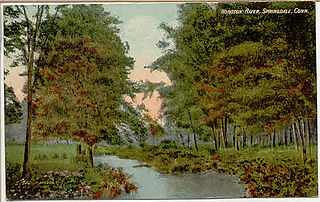
The Noroton River is a 9.4-mile-long (15.1 km) stream which forms most of the border between Stamford and Darien, Connecticut, United States. The river's headwaters are in New Canaan, Connecticut and flow into Holly Pond. It is the largest flowing body of water between the Mill River/Rippowam River to the west and the Fivemile River to the east, although Stony Brook and the Goodwives River in Darien are not much smaller.

The Burning of Fairfield refers to the action of the American Revolutionary War at Fairfield, Connecticut on July 7, 1779 after a British landing force under the command of General William Tryon attacked the town, engaged and dispersed its militia forces, and burned down the vast majority of its buildings. Much of the action took place in areas that are now part of Bridgeport, Southport, and Westport.

Betts Academy was a well-known private academy in Stamford, Connecticut that operated from 1838 to 1908.

The Gold Coast, also known as Lower Fairfield County or Southwestern Connecticut not limited to the Connecticut panhandle, is an affluent part of Western Connecticut that includes the entire southern portion of Fairfield County as defined by the U.S. Census Bureau, Super-Public Use Microdata Area (Super-PUMA) Region 09600. The area is about 50 miles (80 km) northeast of New York City, and is home to many wealthy Manhattan business executives. Parts of the region are served by the Western Connecticut Council of Governments.

Westover is an affluent section of Stamford, Connecticut, United States. With a median household income of $186,607, it is one of the wealthiest neighborhoods in the city, along with Shippan Point and North Stamford. The neighborhood is bordered by Mianus River State Park to the west, the Merritt Parkway to the north, Stillwater Road to the east, and Palmer Hill Road to the south.




















